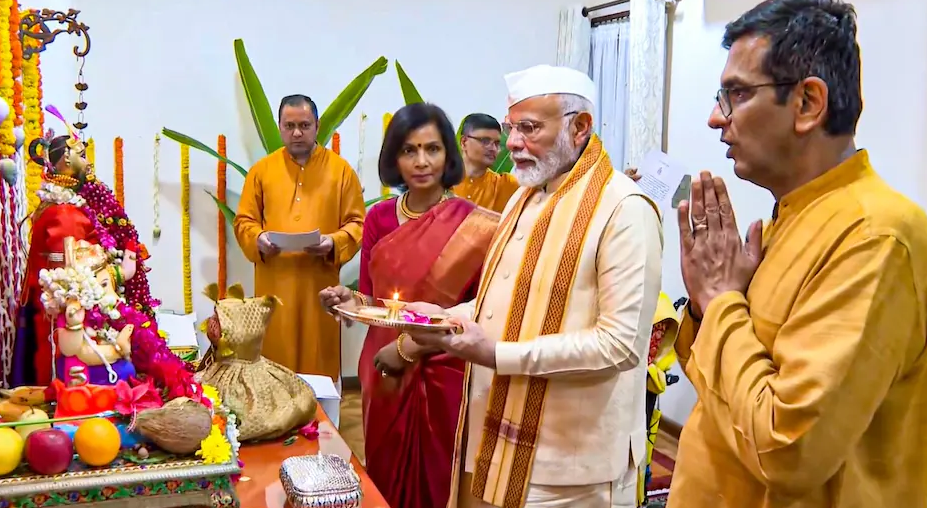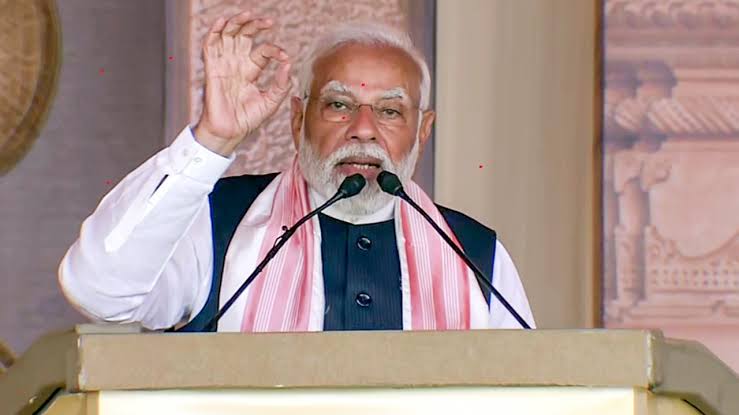A day after Prime Minister Narendra Modi visited the residence of Chief Justice of India D.Y. Chandrachud for a Ganpati puja, a debate emerged among legal experts, former judges, and political parties regarding the appropriateness of the visit being made public. Many questioned whether the publicization of such a visit might affect public perception of the judiciary’s independence.
While the ruling Bharatiya Janata Party (BJP) praised the visit as a sign of a healthy democracy, emphasizing “civility” and “cordiality” between leaders, Opposition parties raised concerns. Congress remained silent on the issue, but the Shiv Sena (UBT) suggested that CJI Chandrachud should recuse himself from cases related to the Shiv Sena’s internal split.

Former Chief Justice of India R.M. Lodha weighed in, emphasizing the importance of maintaining a clear separation between the judiciary and the executive, stating that “a certain distance is to be maintained.” He acknowledged that while public perception could be impacted, he believed judicial decision-making would remain unaffected. He noted that this was the first instance he could recall where a Prime Minister visited the official residence of a Chief Justice.
Senior lawyer and Rajya Sabha MP Kapil Sibal, speaking in his capacity, expressed his surprise at the visit, saying it was inappropriate for the Prime Minister to attend such a private event, especially considering the timing of upcoming Assembly elections in Maharashtra. Sibal speculated that the CJI may not have been aware that the visit would be publicized and warned that it could send the wrong message to the public.
Retired judges also echoed these concerns. Former Chief Justice of the Allahabad High Court, Govind Mathur, labeled the visit being made public as “improper,” suggesting it might harm the judiciary’s image in the public eye, although he did not believe it would affect future rulings. Retired Delhi High Court judge Justice Rekha Sharma added that the visit should have been avoided altogether, noting that social interactions between the Chief Justice and the Prime Minister could raise doubts among those involved in cases before the Supreme Court, especially in sensitive matters like human rights violations.
As the conversation around the visit unfolds, it raises broader questions about the relationship between India’s judiciary and the executive and the potential influence of public perception on judicial independence.



